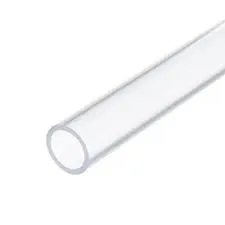Říj . 12, 2024 02:05 Back to list
hdpe culvert pipe
Understanding HDPE Culvert Pipes A Versatile Solution for Drainage Systems
High-Density Polyethylene (HDPE) culvert pipes have emerged as a significant innovation in the field of civil engineering and construction, particularly in drainage systems and infrastructure development. Their unique properties and advantages make them a preferred choice for various applications, including roadways, agricultural drainage, and stormwater management. In this article, we will explore the characteristics, benefits, applications, and considerations of HDPE culvert pipes.
What is HDPE?
High-Density Polyethylene is a thermoplastic polymer made from petroleum. It is known for its high strength-to-density ratio, making it lightweight yet durable. HDPE is resistant to many chemicals and environmental conditions, which contributes to its longevity and effectiveness in various applications. It is commonly used in packaging, plastic bottles, and due to its structural integrity, as culvert pipes.
Characteristics of HDPE Culvert Pipes
One of the standout features of HDPE culvert pipes is their flexibility, which allows them to withstand ground movement and pressure without losing structural integrity. Unlike traditional materials such as concrete or metal, HDPE is resistant to corrosion, which mitigates the risk of deterioration over time. This makes HDPE culvert pipes particularly advantageous in areas where moisture and chemical exposure are common.
Additionally, HDPE pipes are manufactured to specific dimensional tolerances and are available in various diameters and lengths, making them versatile for different projects. Their smooth interior surfaces reduce friction, allowing for self-cleaning properties and increased flow rates, which is crucial for effective drainage.
Benefits of HDPE Culvert Pipes
1. Durability and Longevity One of the most significant benefits of HDPE is its resistance to environmental stressors. HDPE culvert pipes can last for decades, reducing the need for frequent replacement and maintenance.
2. Cost-Effectiveness Due to their longevity and low maintenance requirements, HDPE culvert pipes can be more cost-effective over time compared to traditional materials. Installation processes are usually simpler and quicker, saving on labor costs as well.
hdpe culvert pipe

3. Environmental Impact HDPE is recyclable, making it an environmentally friendly choice. Additionally, its lightweight nature reduces the energy consumption associated with transportation and installation, further lowering its carbon footprint.
4. Ease of Installation The flexibility and lightweight nature of HDPE pipes make them easier to handle and install. This can be particularly advantageous in remote locations or challenging terrains where heavy machinery may not be accessible.
5. Hydraulic Efficiency The smooth interior of HDPE culvert pipes promotes high flow rates and minimizes the risk of blockages. Their design helps manage stormwater effectively, reducing the chances of flooding in surrounding areas.
Applications of HDPE Culvert Pipes
HDPE culvert pipes are used in a variety of applications, including
- Transportation Infrastructure Used to manage drainage under roads, highways, and railways, ensuring safe and efficient passage of water. - Agricultural Drainage In agricultural settings, HDPE pipes help manage excess water, improving crop health and reducing soil erosion. - Stormwater Management Used in municipal applications to control stormwater runoff and ensure proper drainage, reducing environmental impact. - Irrigation Systems HDPE culvert pipes can also be effective in irrigation systems, ensuring efficient water distribution.
Considerations
While HDPE culvert pipes offer many benefits, there are considerations to keep in mind. Proper installation is crucial for maximizing their performance. Consulting with engineers or professionals experienced in HDPE applications can help ensure that the pipes are installed correctly and function effectively within the specific drainage system.
Conclusion
In summary, HDPE culvert pipes present a modern, efficient, and environmentally friendly solution for drainage needs. Their durability, cost-effectiveness, and versatility make them an ideal choice for a wide range of applications. As infrastructure projects continue to evolve, HDPE culvert pipes will likely play an increasingly important role in shaping effective and sustainable drainage solutions. Whether for urban development, agricultural use, or environmental protection, HDPE culvert pipes represent a forward-thinking approach to managing water flow and preserving our ecosystems.
-
Durable PP Rigid Sheet: Lightweight, Chemical Resistant Solutions
NewsAug.21,2025
-
PVC Grey Sheet for Extraction: Chemical Resistant & Durable
NewsAug.19,2025
-
Durable PVC Pipe Fittings for Plumbing & Irrigation Needs
NewsAug.18,2025
-
HDPE Steel Belt Reinforced Spiral Corrugated Pipe | High Strength
NewsAug.17,2025
-
HDPE Pipe Fittings: Durable, Leak-Proof Solutions
NewsAug.16,2025
-
Premium CPVC Sheet: High-Temp & Chemical Resistant Solutions
NewsAug.15,2025

